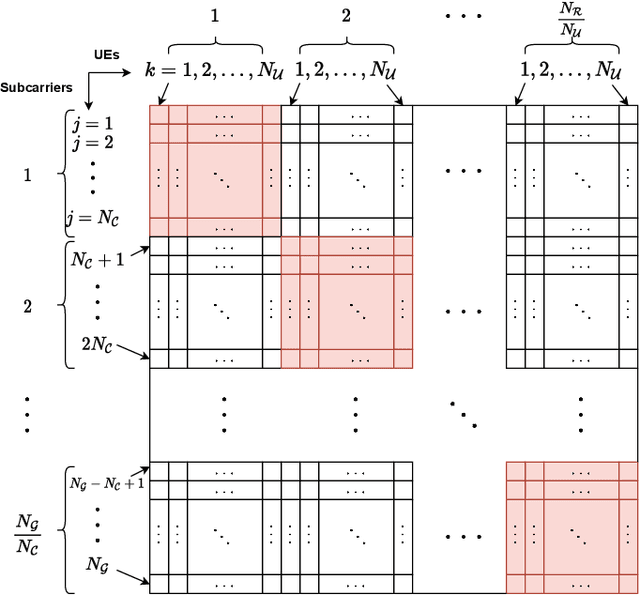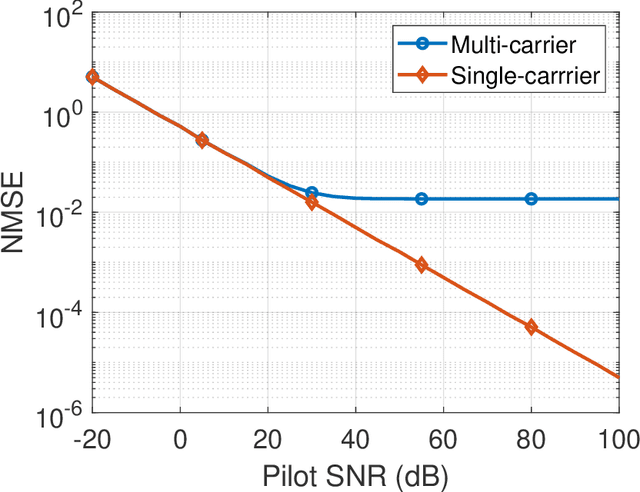Impact of Subcarrier Allocation and User Mobility on the Uplink Performance of Massive MIMO-OFDMA Systems
Paper and Code
Aug 12, 2021



This paper considers the uplink performance of a massive multiple-input multiple-output orthogonal frequency-division multiple access (MIMO-OFDMA) system with mobile users. Mobility brings two major problems to a MIMO-OFDMA system: inter carrier interference (ICI) and channel aging. In practice, it is common to allot multiple contiguous subcarriers to a user as well as schedule multiple users on each subcarrier. Motivated by this, we consider a general subcarrier allocation scheme and derive expressions for the ICI power, uplink signal to interference plus noise ratio and the achievable uplink sum-rate. We show that the system incurs a near-constant ICI power that depends linearly on the ratio of the number of users to the number of subcarriers employed, irrespective of how UEs distribute their power across the subcarriers. Further, we exploit the coherence bandwidth of the channel to reduce the length of the pilot sequences required for uplink channel estimation. We consider both zero-forcing processing and maximal ratio combining at the receiver and compare the respective sum-rate performances. In either case, the proposed subcarrier allocation scheme leads to significantly higher sum-rates compared to previous work, owing to the constant ICI as well as the reduced pilot overhead.
 Add to Chrome
Add to Chrome Add to Firefox
Add to Firefox Add to Edge
Add to Edge